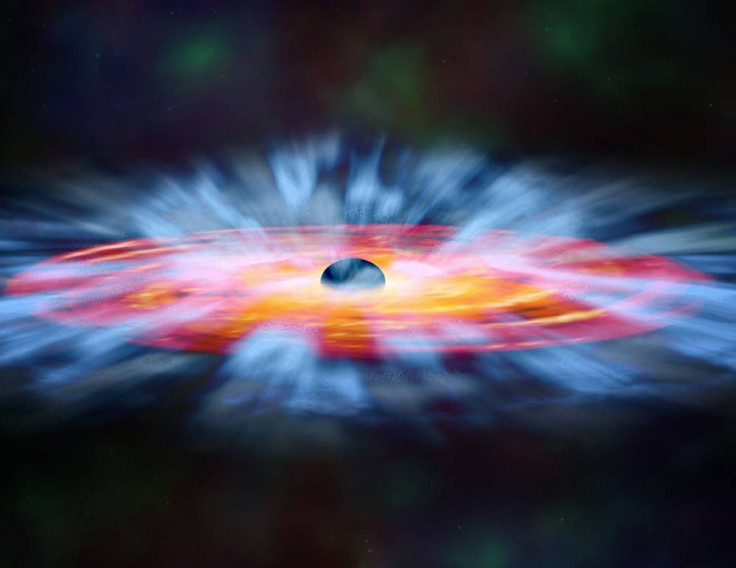Has The Black Hole Information Paradox Been Solved? Stephen Hawking-Led Study Offers Tentative Answers

Back in August, Stephen Hawking dropped a hint that he had finally come up with the solution to a problem that has long vexed scientists — the black hole information paradox. Now, in a new paper titled “Soft Hair on Black Holes,” published online on the arXiv server, the British cosmologist further elaborates his solution to the problem.
“Whether or not this is the final answer is totally unclear to us,” co-author Malcolm Perry, a theoretical physicist at the University of Cambridge, told the Smithsonian magazine. “We’re saying that it’s a step on the way.”
Black holes — sometimes incorrectly described as the “vacuum cleaners” of the universe — are bodies that warp space-time to such an extent that nothing, not even light, can escape once it passes the “event horizon,” or the edge of the black hole.
This unique property of a black hole plays havoc with the laws of physics as we understand them. In a nutshell, the laws of quantum mechanics tell us that everything in the universe is encoded with information about its constituent particles’ quantum states. And, this information should never entirely disappear, not even if something gets sucked into a black hole.
Hence the paradox — how is it that a black hole can seemingly shut shop and disappear, completely erasing information from the universe in a glaring violation of the laws of physics?
“Going way back to Galileo or earlier, the idea of a physical law is that you start out with bodies in some state of motion and interacting, and you use the physical laws to determine either where they will be in the future or where they must have come from,” Harvard University physicist Andrew Strominger, a co-author of the study, told Scientific American. “So it's a very big thing if black holes destroy information. It's a very big thing to say that we cannot use physical laws in the way that we've been accustomed to for thousands of years to describe the world around us.”
Here’s where the new paper comes in. Staying true to Hawking’s previous assertion that “black holes ain't as black as they are painted,” the new study adds another feature to these enigmatic bodies — the so-called “soft hairs.”
Hawking and his co-authors suggest that charged particles crossing the event horizon could leave traces of themselves in space-time in the form called soft photons and soft gravitons, which have no energy. These bizarre particles change the vacuum of space-time and allow it to preserve information about the original particles.
“We show that when a charged particle goes in, it adds a soft photon to the black hole. So it adds hair to the black hole. And more generally if any particle goes in — because all particles carry mass and are coupled to gravity — they always add a soft graviton,” Strominger said, in the interview with Scientific American. “So there’s a kind of recording device. These soft photons and gravitons record information about what went into the black hole — infinitely more information than we previously believed is recorded by this mechanism.”
No one has yet reported a mistake in the calculations presented in the paper, but the theory is still believed to be incomplete. As Sabine Hossenfelder of the Nordic Institute for Theoretical Physics explains in her blog Backreaction, the paper is only “only a first step in a longer argument.”
“Several relevant questions are not addressed and I assume further work will follow,” Hossenfelder writes. “As the authors write ‘Details will appear elsewhere.’”
© Copyright IBTimes 2024. All rights reserved.






















